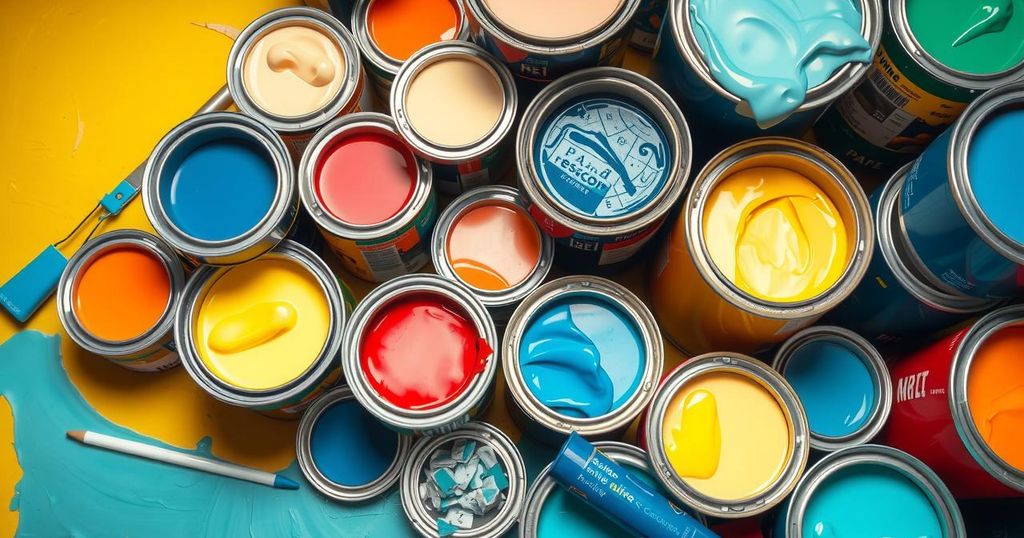Urgent Concerns Over Lead Levels in Paints Sold in Ghana Identified by JoyNews Exposé
JoyNews reports that a study found dangerously high lead levels in paints sold in Ghana, with 15 of 46 samples exceeding safe limits. This marks an increase from previous findings. Unregulated imports and lack of oversight compound the problem, exposing vulnerable populations to severe health risks from lead poisoning.
Research reveals that exposure to lead-based paint can result in significant cognitive impairments affecting both learning ability and memory. In an alarming investigation by JoyNews titled “American Paints: The Painter’s Galamsey,” it has been disclosed that dangerously high-lead paints are being sold in the Ghanaian market. A collaborative study between American researchers and Ghanaian regulatory agencies found that 15 out of 46 tested paint samples contained lead levels exceeding the permissible limit of 90 parts per million (ppm).
This is a notable increase from previous assessments in 2023, where only six out of 59 samples exceeded safe lead levels. Additionally, some paints that were once below the 90 ppm threshold have now surpassed it, with lead content peaking at an astonishing 200,000 ppm. Households using these paints unknowingly expose vulnerable groups, including pregnant women and children, to severe health risks such as irreversible brain damage and neurological disorders.
The rising popularity of these paints is reportedly attributed to their affordability compared to locally manufactured alternatives. However, these products lack certification from the Ghana Standards Authority. As articulated by Prof. Alex Dodoo, the Authority’s CEO, these so-called “American paints” are not subjected to regulatory oversight, leading to significant public health concerns.
Current regulatory challenges compound the issue, with the Ghana Standards Authority claiming that responsibility for monitoring imported paints has been transferred to the Food and Drugs Authority (FDA). Conversely, the FDA argues that it lacks jurisdiction over such imports, resulting in a regulatory vacuum. Customs officials and importers have been implicated in schemes to smuggle hazardous paints into the country, evading statutory duties and critical regulations, thus thwarting enforcement of safety standards.
Concerns have also been voiced about the processing conditions of these paints by the Ghana Standards Authority’s Inspectorate Directorate, headed by Jessica Nkansah. Lovelace Sarpong, a Technical Officer with the Environmental Protection Agency (EPA), pointed out that while some local manufacturers have improved their lead content in response to previous investigations, the influx of uncertified imports poses a persistent danger.
The misleading label of “American Paints” appears to be a deceptive marketing strategy aimed at enticing consumers into purchasing inexpensive yet hazardous products. Without immediate intervention, the continued availability of these toxic paints represents a significant threat to public health, especially to children, the most susceptible victims of lead poisoning.
In conclusion, the alarming presence of high-lead paints in Ghana poses serious health risks, particularly to vulnerable populations such as children and pregnant women. The lack of regulatory oversight, coupled with increasing instances of unsafe imported paints, necessitates urgent action to safeguard public health. The deceptive branding of these products as ‘American Paints’ further highlights the urgent need for consumer awareness and stringent regulatory measures to protect against lead poisoning.
Original Source: www.myjoyonline.com




Post Comment